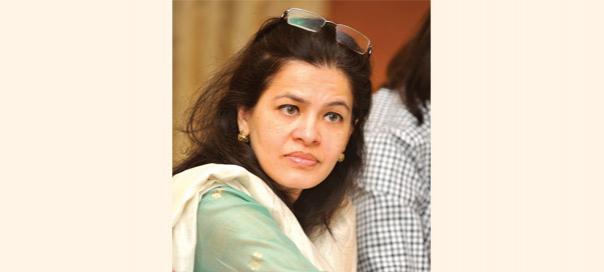Innovations in technology can help solve many challenges and Microsoft is aiming to do just that with the use of local language technology in India. It is also helping businesses achieve their full potential. By incorporating Hindi language in the Windows Operating System, the brand has bridged a huge divide. Content in local language will only help more people access the Internet and avail its benefits. According to the Internet and Mobile Association of India and IMRB International, Internet users in India could increase by 24% if local language content is made available. Jyotsna Makkar, CMO, Microsoft India explains to Rashi Bisaria how the brand has been committed to helping the Hindi-speaking market achieve its full potential through technology
Q] How is Microsoft empowering people especially in the Hindi-speaking States of North India? What is the significance of this market for the brand?
Microsoft was founded with the mission of putting a PC on every desk and in every home. Today, we are focused on enabling people and businesses achieve their full potential. Our efforts towards local language computing in Indian languages started in 2000, when we enabled Hindi Language in the Windows operating system. Following this, we launched Office 2003 with full support for Hindi. Currently, Language Interface Packs (LIP) are available in Hindi for both Windows & Office, among other Indian languages.
Further, Windows supports four Hindi fonts and more than 10+ Keyboard layouts are supported for Hindi input including the Inscript Keyboard; www.bhashaindia. com provides content in Hindi for end users and developers. Office 365 is also available in Hindi. The entire look and feel of the PC or the device can be converted to Hindi – a true – “Hindi PC/Device/Phone”. We also offer Hindi support within Bing and on Windows Phone. Microsoft’s vision is to reach out to the underserved and help people realize their full potential through skill development and education.
Our longstanding YouthSpark – Project Jyoti, focuses on providing IT skills to young adults in under-served communities, and has been very impactful in MP and Bihar. For example, in MP, YouthSpark-Project Jyoti has partnered with the Aga Khan Rural Support programme India (AKRSPI) to operate a dedicated YouthSpark Center in Khandwa district under the name ‘YouthSpark-YUVA Junction’. To date, the programme has trained over 9,000 youth (since 2009) with a placement rate of over 70%. In Bihar, YouthSpark-Project Jyoti has partnered with AKRSPI to run four ‘YouthSpark-YUVA Junction’ centres in the Muzzafarpur and Samastipur districts. One beneficiary from the Muzzafarpur centre, Ranjeet Sahni, was invited to participate in the MSFT annual meeting MGX2013 at Atlanta. Ranjeet’s story is an inspiration for the village where he has emerged as a hero. Microsoft has equipped him with skills that help him earn a living. He is not alone. Microsoft provides curriculum, computers and teacher training for tech centres to empower young people from these States. The programme has also partnered with Aide et Action India (AeA) to Patna City to provide vocational training in trades like ITeS, Medical Care, Electrical, Mobile Repair, etc.

Q] What is your marketing strategy for these States?
We want to demonstrate how our portfolio of devices and services can empower every individual and business to achieve more. Beyond Marketing, one of our key focus areas across the country and in the Hindi heartland as well, is to bring the youth into the sphere of the nation’s development, inclusion and change. Our programmes provide opportunities for youth at the school and college levels, by transforming education, expanding digital inclusion, and helping them acquire relevant skills for employment or entrepreneurship. In UP, Microsoft’s Project Shiksha today runs in five DIETS (District Institutes for Education and Training). In Bihar, Microsoft has been promoting digital literacy by implementing programmes enhancing the scope of digital literacy. We also have four Microsoft Innovation Centres (MICs) in institutions in MP, which are innovation hubs at select colleges and technology institutes, providing incubation and expert hands-on support on Microsoft technology innovation, research, and software solutions, aiming to create a pool of student technology experts.
Q] How has Microsoft reached out to consumers in this belt?
We architect integrated, multi-media campaigns for our Communication efforts, and Television, Digital, OOH and Print have specific roles to play, depending on campaign objectives. For example, a few months back we did a radio campaign across three cities including Bhopal that had a huge impact. The focus of the campaign was on our local language technologies and products. Print is the other powerful medium, given its massive reach. Vernacular dailies play a vital role in Tier II and Tier III towns, be it to deliver launch impact, drive engagement with our target audience, build local connect or drive retail excitement. We have leveraged vernacular Print extensively for product launches as well as to spread awareness for our localization efforts and what Microsoft is doing to bridge the digital divide. With more devices and services enabled in Hindi and more keyboard support coming soon, we have a great story to tell and engage consumers in the Hindi heartland.
Q] Any particular Print campaign which has been significant for your brand?
We have used Print extensively for all strategic launches, be it Windows 8, O365 or Windows Phone.
Q] What percentage of your marketing spend is allocated to Print?
Print currently is the second most important media vehicle after TV in our marketing strategy, with spends varying from 15-20% of the media mix.
























